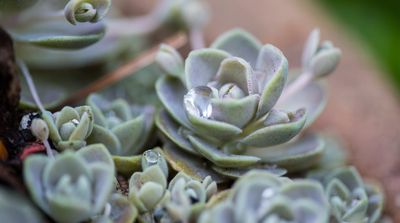What is Sedeveria?
Sedeveria succulents have two outstanding qualities that make them popular with gardeners: they are absolutely lovely, and they require very little maintenance. In fact, sedevaria plant care is minimal. These hybrids present delightful rosettes that look like flowers but in shades of green, silver green and blue green. Some sedeveria plants have red or yellow tones or accents. The leaves that make up the rosettes are thick and look padded.
Sedeveria Plant Growing
If you decide to start growing sedeveria plants, you’ll still have decisions ahead of you. There are so many beautiful sedeveria succulents to choose from. For small plants with exquisite rosettes, look at Sedeveria ‘Letizia.’ The delicate rosettes develop red edging under cool winter sunlight. Or for rosettes with noticeable red tones, look at Sedeveria ‘Sorrento.’ Both of these plants, like most succulents, tolerate drought well and grow in sun or light shade. Another interesting sedeveria succulent is Sedeveria x ‘Hummelii,’ growing spiraling blue-gray rosettes with rosy tips. This plant also offers star-like yellow blossoms on short stems. Hummelii only gets ankle high, but it spreads twice that wide.
Sedeveria Plant Care
When it comes to sedeveria plant care, don’t plan on investing too much time if your region is warm. It’s important to check your hardiness zone if you want to start growing sedeveria outside, since some only thrive in U.S. Department of Agriculture plant hardiness zones 10 and 11. Other sedeveria plants grow fine in zone 9, but remember that they may be only half-hardy. That means that when a cold spell is coming, you might want to cover them with protective fabric. Alternatively, sedeveria plants work well in containers that can come inside when temperatures drop. Plant sedeveria succulents in well-draining soil in a sun-dappled location. After that, you can basically forget about them, other than to enjoy their year-round rosettes. Don’t water your sedeveria plants too much and, in areas that get some rain, don’t irrigate them at all.
